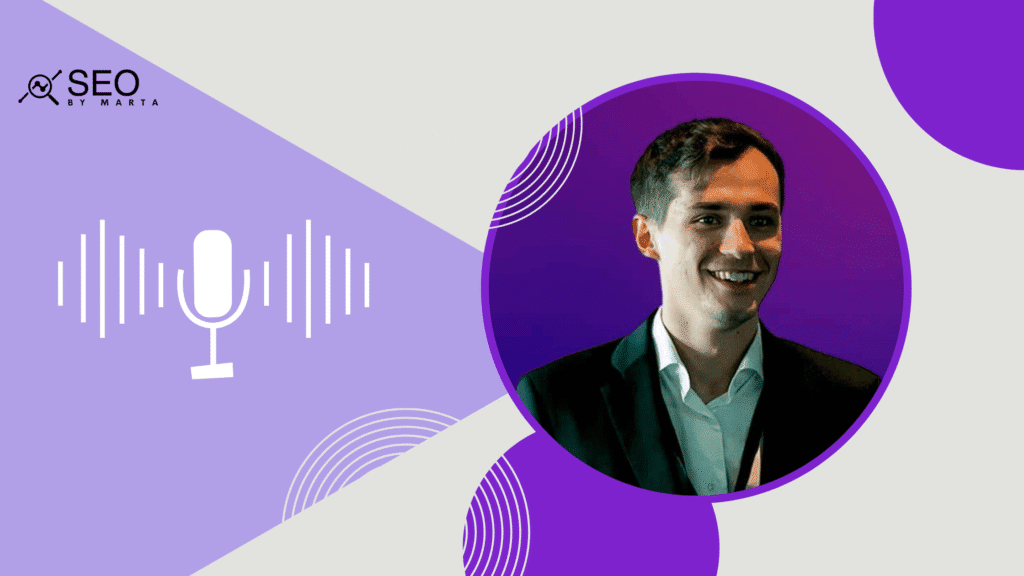About Anna York
Anna York is an SEO strategist and one of the leading voices in the shift toward AI-first search optimization. Her work focuses on bridging the gap between traditional SEO metrics and the new realities of AI-driven discovery. Based in Hamburg, she’s spent nearly a decade helping businesses—from startups to global brands—navigate the fast-evolving world of search. Anna quickly became the go-to expert for deploying automation and smart tech to unlock AI SEO growth. Her frameworks, rooted in answering real customer questions, have helped teams pivot from keyword-chasing to building trust with next-generation platforms. Anna’s approach is practical and informed by years spent in the trenches. She’s known for turning trends into simple, actionable strategies that anyone can put to work—whether optimizing for traditional search engines or for AI visibility.
Interview: Why traditional rankings are no longer enough — and how modern visibility requires a multi-layered strategy
Traditional rankings and traffic reports no longer tell the whole story. With the rise of AI-driven tools, users often get their answers without ever clicking a website. Anna York has been at the forefront of this transformation. She’s helped brands reimagine visibility as a layered strategy — one that spans Google’s SERPs, AI Overviews, and generative platforms. In this interview, Anna explains why traditional rankings are no longer enough, how to design content that AI systems trust and cite, and what the future of SEO measurement will look like.
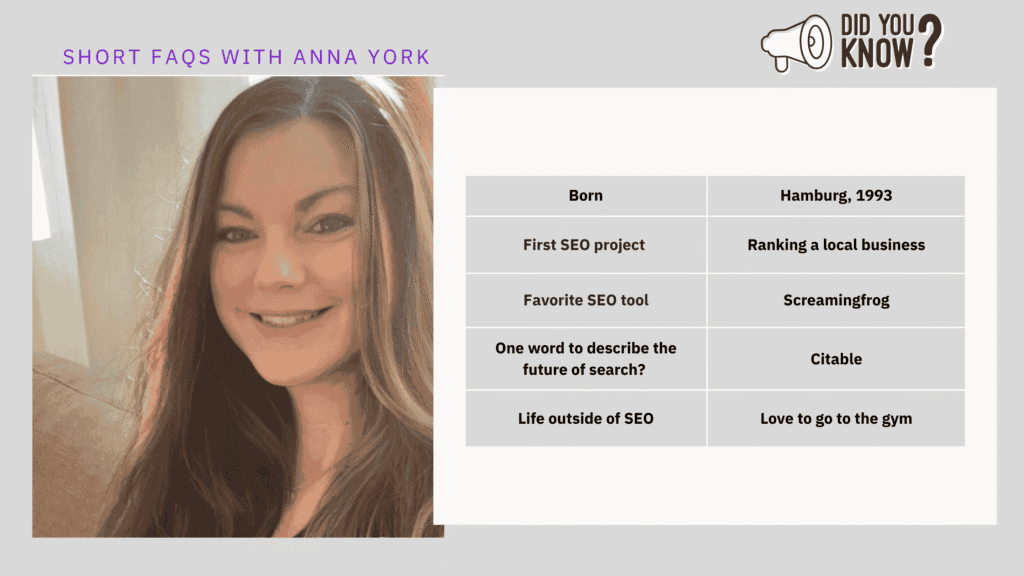
Q: Thank you, Anna, for agreeing to this interview. Here is my first question for you: How has the rise of AI-powered search engines changed the fundamentals of SEO compared to traditional ranking factors?
A: AI-powered search moved the outcome from “one page ranks first” to “many sources get synthesized,” so being mentioned across sources now beats a single #1 ranking. AI Overviews and LLM answers synthesize and cite multiple pages, which values breadth of mentions, concise answerability, and structured, machine-readable facts. AI-driven discovery favors recency, micro-niche authority, and community signals (Reddit, niche blogs, YouTube transcripts) as much as traditional backlinks.
Also, AI visibility can now be earned quickly (a single helpful mention in an active community can surface a brand to AI results), reducing the years-long domain-authority barrier that classical SEO relied on. It is important to mentions that, AI-sourced visitors tend to have higher purchase intent and convert better in many case studies, so conversion-focused content and measuring downstream outcomes matter more than pure position tracking.
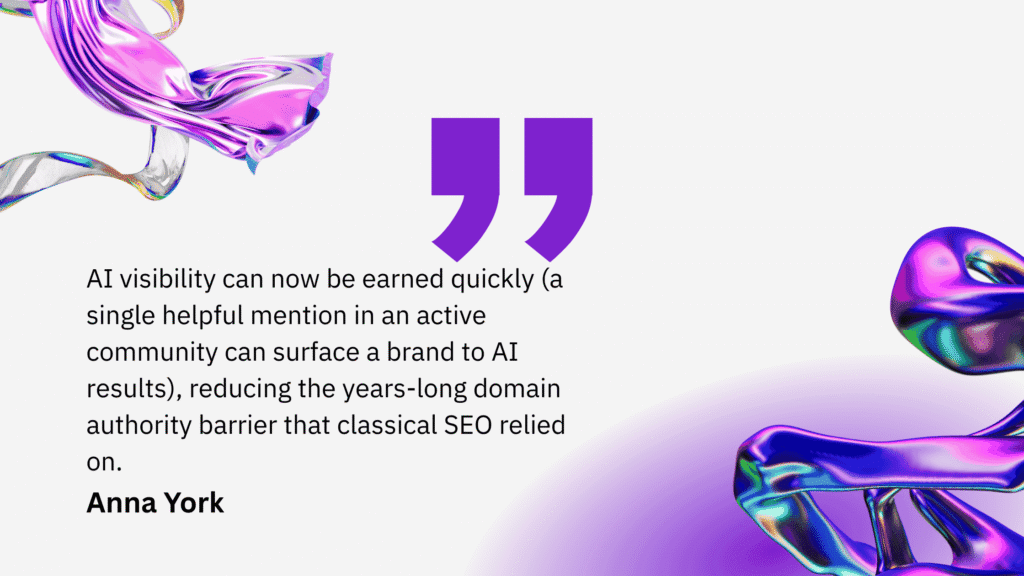
Q: Your frameworks AEO and GEO have become central in the conversation about AI-first SEO. For those new to the concepts, how do they differ from traditional SEO approaches?
A: AEO (Answer Engine Optimization) focuses on shaping content so AI assistants can directly produce your answer and cite your resource.
GEO (Generative Engine Optimization) is the broader practice of preparing content and brand signals so generative engines (Google AI Overviews, ChatGPT, Copilot, Perplexity, etc.) will surface, synthesize, and attribute your content.
Traditional SEO optimizes ranking positions, CTRs and link authority for search-engine results pages.
AEO and GEO optimize for extractability, concise factuality, cross-source corroboration, and appearance inside multi-source summaries rather than a single blue link.
Practically, that means shifting some effort from long-form link-hunting to:
- owning micro-niche Q&As,
- publishing help docs in discovery-friendly formats,
- creating easily-citable data points and
- earning mentions in community spaces.
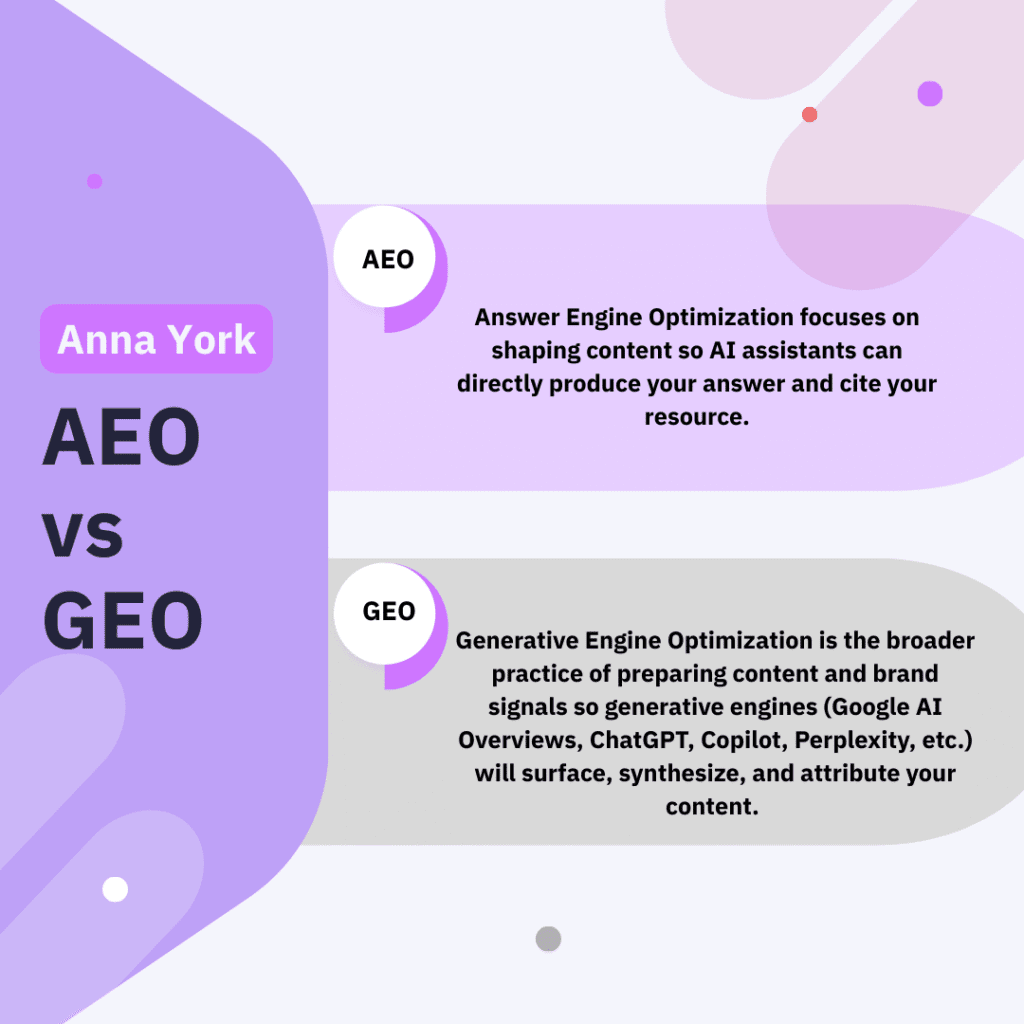
Q: AI Overviews now appear in more than one-third of Google searches. What practical steps should SEOs take to maximize their chances of being cited in these summaries?
A: Here are some steps I would follow:
- Map the exact questions AIs are answering by using competitor paid-search queries, SGE monitoring tools, and query logs.
- Convert product-feature docs and help articles into single-question landing pages (each page, one clear question + one definitive answer + follow-ups).
- Add structured FAQ schema, short TL;DR lead paragraphs, and one-sentence answer blocks at the top of each page so extraction is trivial.
- Create compact “fact boxes” with numbers, compatibility tables, and exact phrasing for integrations (e.g., “Integrates with X via Zapier to send events to Y”).
- Earn corroborating mentions off-site: targeted Reddit answers, niche YouTube videos, affiliate posts and product comparisons that repeat the same lines or data points.
- Track citations and build “answer tracking” into analytics and record which pages are cited in AI answers and run A/B experiments to confirm lift.
Q: You’ve spoken about “citation hooks” as a way to design AI-friendly content. Can you explain what they are and how brands can implement them effectively?
A: A citation hook is a purposely-designed, easily-extractable fact, phrase, or format on your page that makes it likely an AI will quote and cite your site.
Good citation hooks are short, unambiguous, and authoritative e.g.,
“As of March 2025, Product X exports meetings to BigQuery via Zapier in under 3 steps.”
Here are some implementation tactics:
- create single-sentence lead answers,
- include numbered steps,
- publish integration compatibility matrices, and
- surface product-feature FAQs in clear H2/Q format.
Also, you can make hooks portable by publishing short embed-ready snippets, adding a clear permalink, and producing short video clips with identical wording in the transcript.
You should also distribute the same hook offsite- this means- a Reddit reply, a guest post and a YouTube description that repeats the exact line to create multi-source corroboration that LLMs prefer.
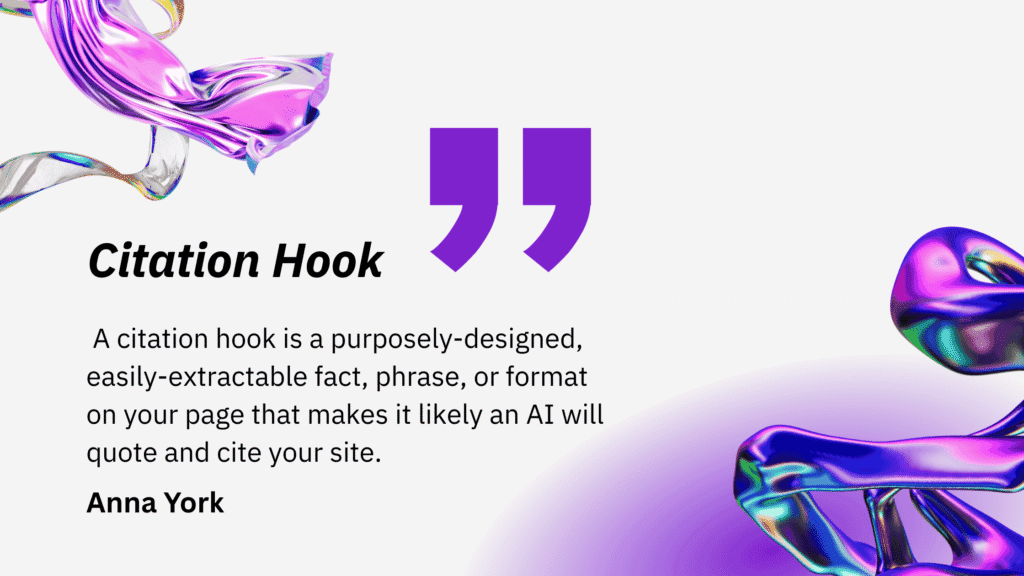
Q: Traditional KPIs like traffic and rankings still matter, but new ones like AI citations, AI visibility share, and brand mentions are emerging. How should SEOs balance both worlds?
A: SEOs should keep traditional SEO KPIs (organic sessions, landing-page conversions, rankings for core keywords) as their baseline for health.
It is now important to add AI-native KPIs: AI citations (number of distinct AI outputs citing your assets), AI visibility share (share of AI answers in target queries), and AI conversion rate (conversions attributable to AI-sourced visits).
SEOs should treat AI citation share as a top-of-funnel “share of voice” metric and measure its downstream impact on conversions and LTV.
It also makes sense to report both sets of KPIs together and to prioritise the channel that delivers higher-qualified traffic and better conversions for your business goals.
Q: If a brand has limited resources, where should we start when trying to optimize for multi-layered visibility — SEO, AEO, GEO, and SXO?
A: You can start with the help-centre and product-FAQ pages. Later, you can move them into a subdirectory, and format each as one-question pages with schema and short lead answers.
Also, my advice would be to create one authoritative micro-niche video per low-competition B2B topic and upload it to YouTube with a full transcript and exact phrasing you want AIs to quote. In general is important to own at least one community channel (an honest Reddit account or a StackOverflow profile) and answer 5–10 real questions with full disclosure of who you are that authenticity converts to AI trust.
I highly recommend implementing basic schema, tracking AI citations, and running one controlled test (e.g., add a citation hook + 5 offsite mentions) to validate impact before scaling. If your budget is one constraint, you can prioritize channels that produce both citations and conversions first (help docs + long-tail video + 1 community play).
Q: E-E-A-T has been a cornerstone of Google’s updates. Do you see expertise, experience, authority, and trust playing the same role when AI systems select answers?
A: Yes, E-E-A-T still matters and often governs eligibility for being cited in AI Overviews rather than just rank order. Google and other platforms continue to use their quality frameworks and Knowledge Graph signals to decide which sources are safe to cite inside synthesized answers. In practice that means human signals (author expertise, original research, correct citations, and demonstrable experience) protect you from being filtered out or downranked in AI summaries.
So don’t abandon E-E-A-T embed credentials, publish authored bylines, earn authoritative links, and create first-party data that proves your claims.

Q: If you had to give one piece of advice to SEOs who want to future-proof their strategies against both Google updates and AI disruption, what would it be?
A: I don´t have one piece of advice, but here are a few steps that I think could be helpful:
- Design your content to be citable: create single-question pages, use clear one-sentence answers, factual data points, schema, and practice distributed corroboration across video, forums, and niche publishers.
- Add practical example (step-by-step) target query: “Which meeting transcription tool integrates with Looker via Zapier to BigQuery?”
- Add a three-line TL;DR: “Yes — Product X supports Zapier → BigQuery; steps: 1) connect Zapier, 2) map fields, 3) confirm export; latency: ~2–5 minutes.”
- Add a compact table of integrations and JSON-LD integration schema.
- Publish a 4-minute YouTube video titled exactly “Transcribe meetings to BigQuery via Zapier (Product X walkthrough)” and paste the canonical one-sentence answer in the video description and transcript.
- Post one helpful, non-promotional Reddit answer in an integration or product community that repeats the same phrasing and links to the canonical page.
- Pitch one affiliate/blogger to mention the exact integration sentence (or include the table) so multiple independent sources repeat the same hook. Track whether AI summaries begin citing your page, measure AI-originated sessions and conversions, then iterate on phrasing and distribution to increase citation share
Conclusion
What comes through in Anna York’s perspective is her pragmatism. She doesn’t view AI search as a threat, but rather as the next logical step in how people discover information. For Anna, winning visibility is about designing content that is easy for machines to extract and trustworthy enough to be cited—whether that’s through citation hooks, structured Q&A formats, or community validation. She reminds us that while traditional KPIs like traffic and conversions still matter, the real competitive edge now lies in measuring AI visibility and citations. Her advice is refreshingly actionable: focus on clarity, structure, and corroboration across multiple platforms. If SEO in the past was about chasing rankings, Anna makes the case that the future is about earning trust in both human and machine-driven discovery.




